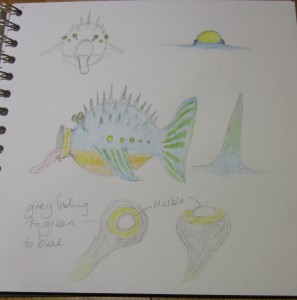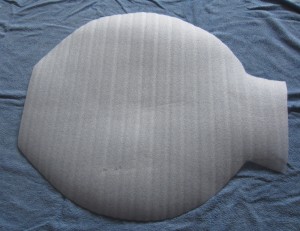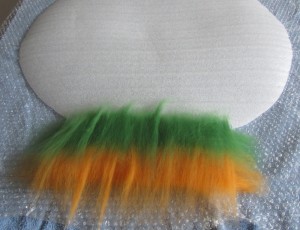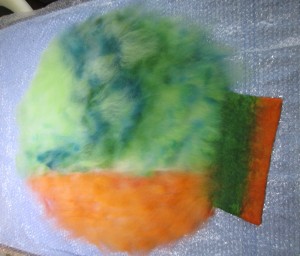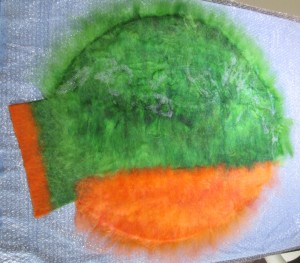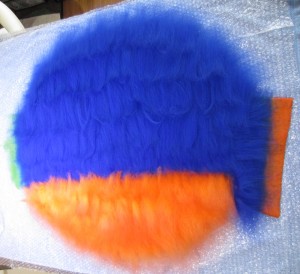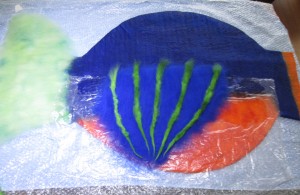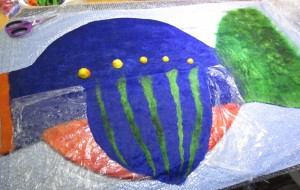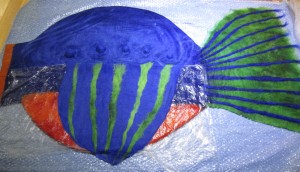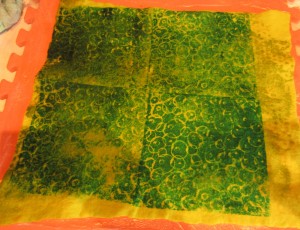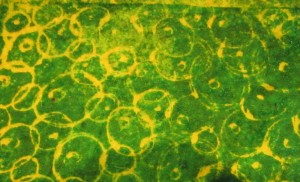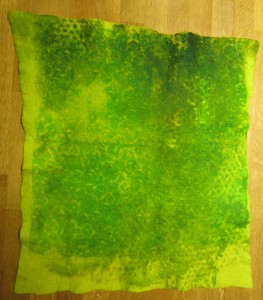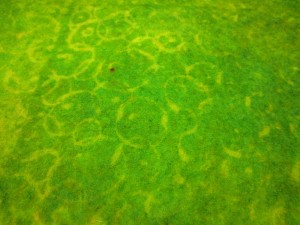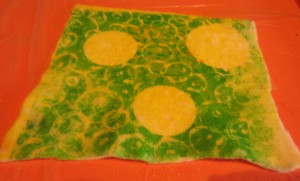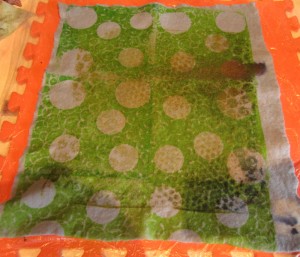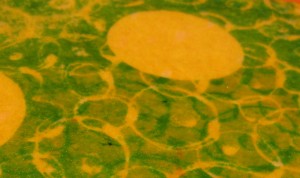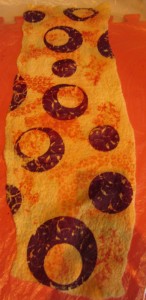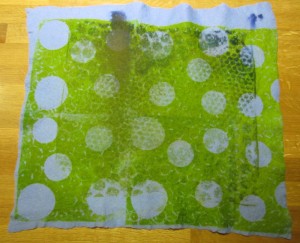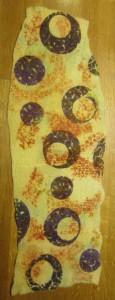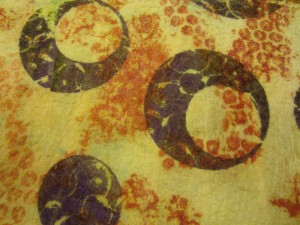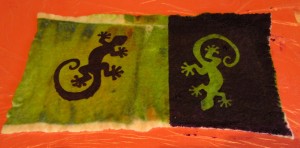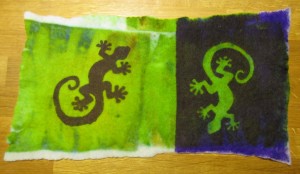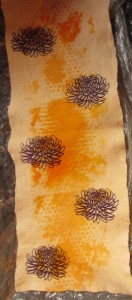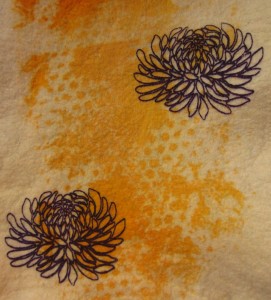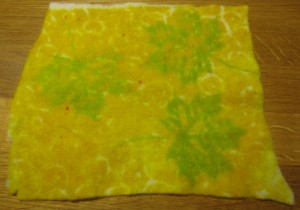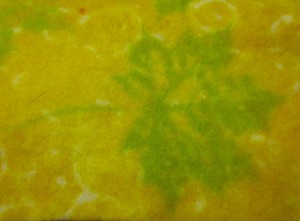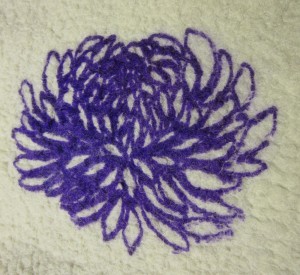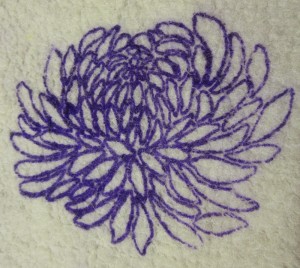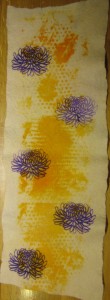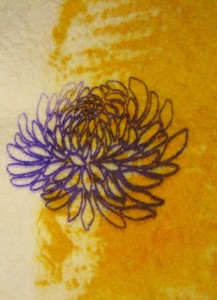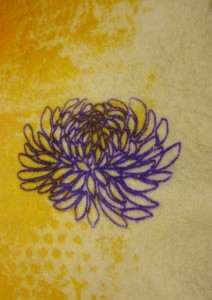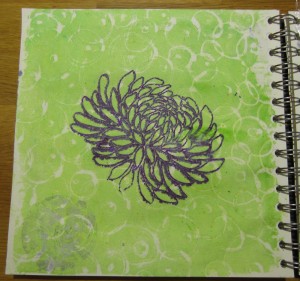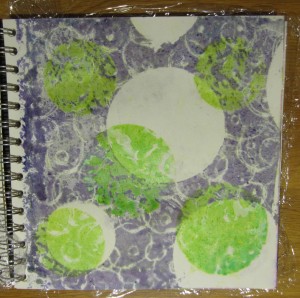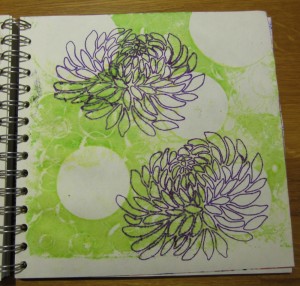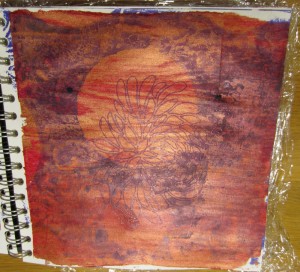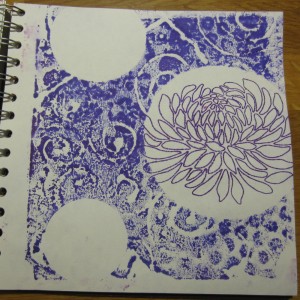This week I have been working on a commission piece for this very handsome young man. His name is Ki and he is a Senegal parrot.

His mommy (Ceci) wants to treat him to a new bed / hidey-hole and was taken with the idea of my cat / parrot eating fishes:
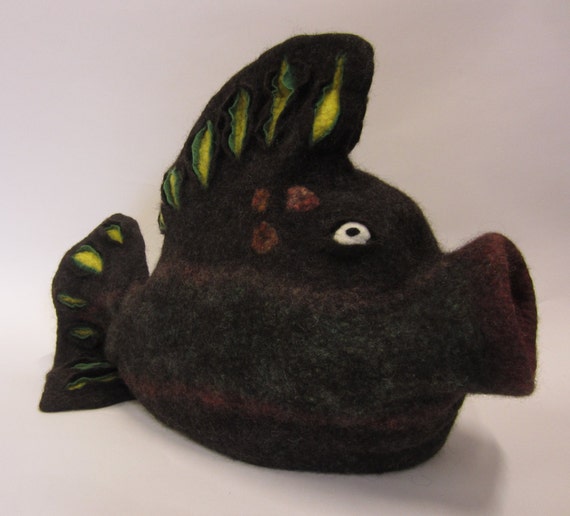
But being an artist herself (link here), Ceci and I have been having lots of fun creating a sea monster loosely based on Ki’s beautiful colours, this is a sketch detailing some of the ideas we came up with.
The sea monster will have marble eyes on stalks, pectoral fins for Ki to snuggle under, a perch inside and a tongue “ramp”. This is proving to be a very unusual project! 🙂
I cut a resist based on the original cat-eating fish resist and adjusted the size to better fit Ki
Then started with laying out the mouth / lips – Ceci said she would like the mouth to be green inside, once the “mouth flap” is folded back to give it strength to support Ki, the lips will be orange on the outside and green on the inside.
Then I started laying out the internal layers of wool, Ceci expressed an liking for blue-green colours over the top, by using some hand dyed green wool for the inner layers I hope the green will migrate and blend with the very vivid blue I have for the top layers, giving a subtle, mottled green tinge to the finished cave.
Then adding a darker layer of green and a brighter orange – this will form one of the middle layers.Notice how the mouth / opening is angled downwards to make it easier for Ki to climb inside.
Then finally a couple of layers of sapphire blue and some more orange. I love this shade of blue and think it really “sings”next to the orange 🙂
Then adding some pectoral fins on each side and the middle layer for the tail fin
Then I made a series of felt balls in marbled yellow-orange colour and laid out the darker green for the tail fin.
The felt balls were covered with blue wool to secure them (some of the blue wool will be cut away later to reveal the yellow underneath) and added some blue stripes to the tail fin.
Tomorrow I start making lots of spikes and of course the eyes on stalks!
For those of you reading by email, this is the link to the web page: blog post

